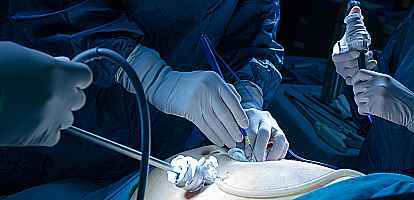Introduction
About 25% to 30% of women who had surgery for pelvic organ prolapse may have recurrence and need another operation. The recurrence can occur in the same compartment of the vagina or in another compartment. When a transvaginal route has failed, a transabdominal surgical approach may be needed. This surgery is called sacrocolpopexy (in those with no uterus) or sacrohysteropexy (in those with a uterus). The success rate is 80% - 90%.
Indications
It is usually indicated in patients who have failed previous transvaginal surgery for pelvic organ prolapse. In particular, it treats recurrent cystocele or upper vaginal prolapses (enterocele, vault prolapse) well.
Preoperative Instructions
If you are taking blood thinners or certain newer diabetic medications, please inform your doctor as these may have to be stopped before the surgery.
You will need to fast for at least 6 hours before the surgery.
Your doctor may require you to have blood tests or a urine test prior to the surgery.
See preparing for surgery, for more detailed instructions.
Procedure
It is done under general anaesthesia. Intravenous antibiotics are given. A catheter is placed to drain the bladder.
This can be done using keyhole surgery or an open abdominal incision. The vagina is freed from the overlying bladder, and the rectum underneath it. A small piece of synthetic graft (mesh) is usually used to reinforce the repair by attaching it to the sacrum (bottom of the spine) and the front and back walls of the vagina /uterus. The mesh is then covered with a layer of tissue (peritoneum) to prevent the bowel from sticking to it.
Other repairs may be done at the same time e.g., transvaginal prolapse repairs.
Postoperative Instructions
A catheter will be inserted to drain the bladder and a pack may be inserted into the vagina at the end of the case. These stay in for 1 to 2 days.
Antibiotics are given intra-operatively and post-operatively, to prevent an infection.
Your food and fluid intake is adjusted slowly back to normal post-operatively.
The expected length of stay in the hospital is 2 - 4 days.
After the surgery, patients are advised not to do heavy lifting or strenuous activities for 6 weeks. You can do light duties at home including walking up 1-2 flights of stairs, going for short walks, and going to the shops in the first few weeks. Slowly increase your activity level as you become more comfortable.
Sexual intercourse should be avoided for about 4 to 6 weeks.
Take your pain medication as directed. You may need to take it as soon as you start feeling uncomfortable (before the pain gets severe).
Do not drive for at least 2 weeks as you may still have some post-op pain.
Check with your doctor when you can go back to work as the type of work that you do will determine this. In general, if your work is not too physically demanding, you can go back to work in 3 to 4 weeks. If it is more demanding, you may need about 6 weeks off work.
You should attend your post-op appointment so your doctor can check for any complications.
Risks
General risks:
- Anaesthetic risks such as heart or lung problems.
- Wound infection – you will be covered with antibiotics during the surgery.
- Bleeding – it is uncommon (<1%) to need a blood transfusion for this surgery.
- Clots in the legs (DVT) or pulmonary emboli.
- Chest infection, urinary tract infection.
- Allergic reactions (e.g., to dressings, drugs etc.) – inform us if you have any known allergies.
- Risk of death is a very rare complication that may arise from any surgery or anaesthetic. Modern medicine and anaesthesia have made this extremely rare. The risk varies with each individual’s general health conditions and the complexity of the surgery.
Specific risks:
- Injury to nearby organs (bowel, ureter, bladder) - 1%.
- Bowel adhesions and abdominal hernias are all rare.
- Small risk of the synthetic graft becoming exposed in the vagina (1% - 2%).
- Painful intercourse (<5%), especially if a posterior vaginal repair is also done.
Treatment Alternatives
For other treatment alternatives, see pelvic organ prolapse.
